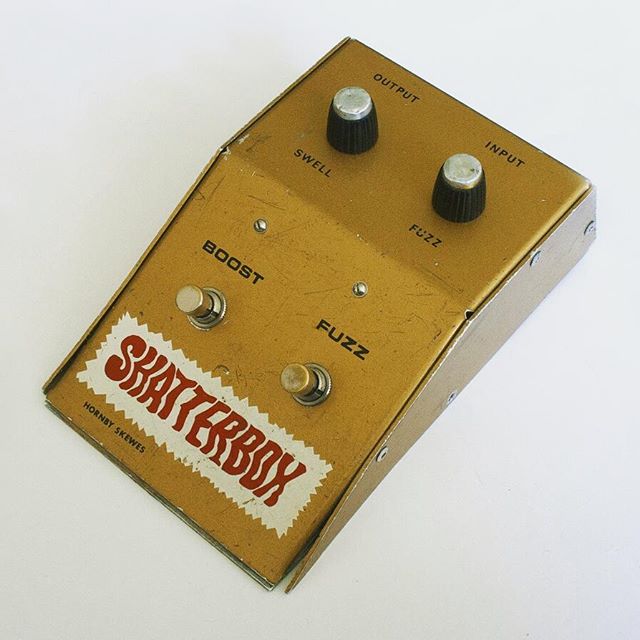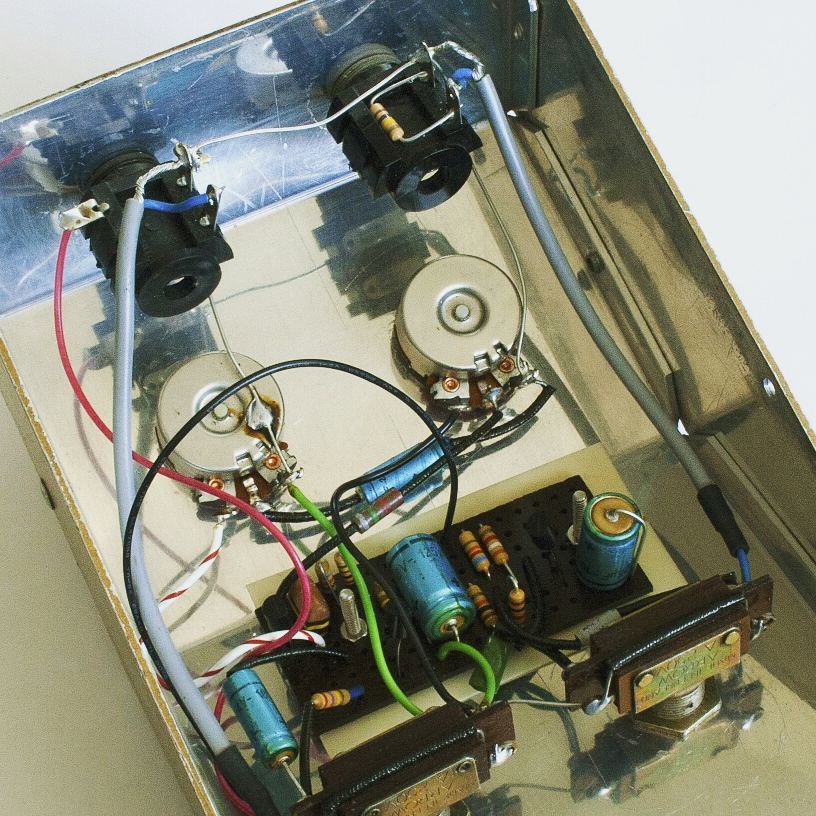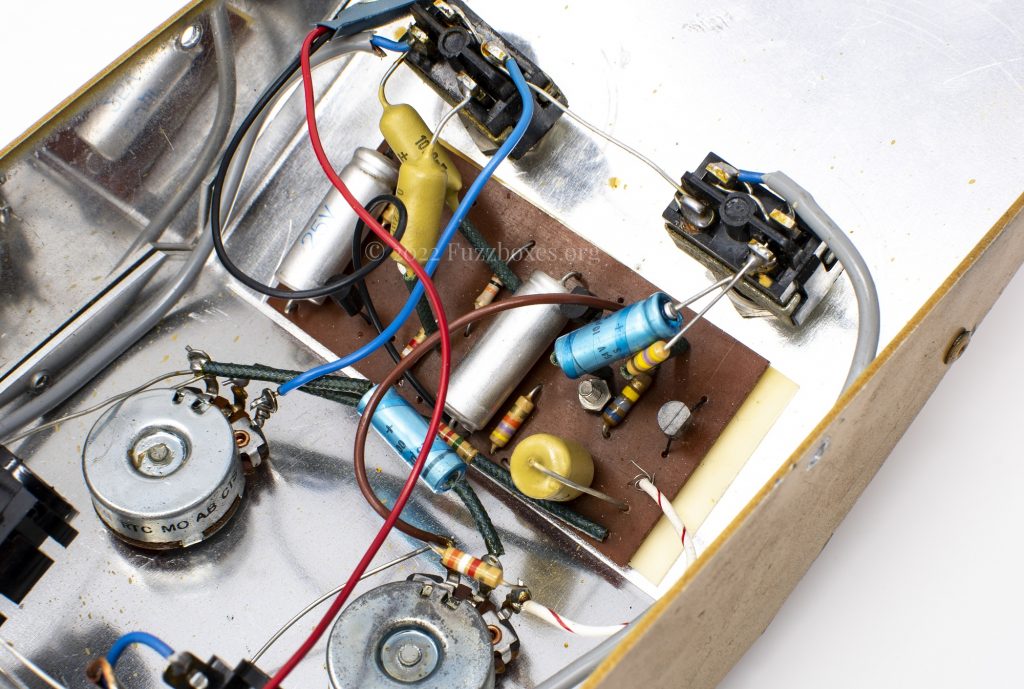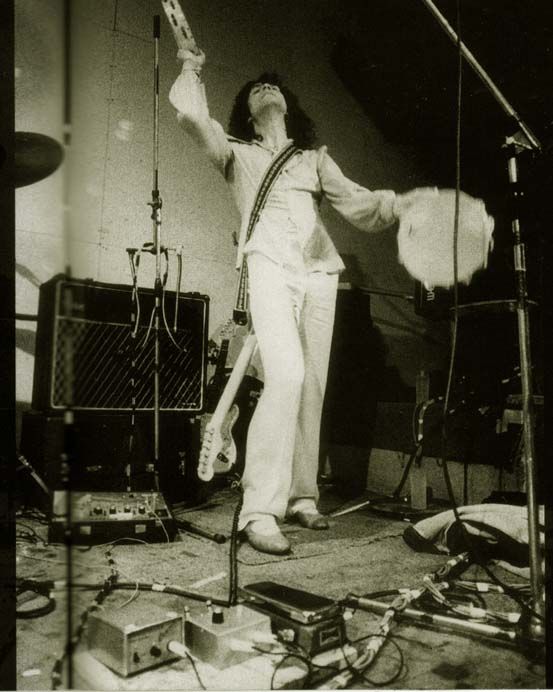Overview
The Shatterbox was an early ‘multi-effects’ fuzz box that combined the Hornby Skewes Treble Booster with the Zonk II. Featuring two foot switches, the Shatterbox offered users a choice of either the boost or fuzz effects, or a combination of both.
With the same construction style as the Wilsic Sound Fuzz, and because late-production Shatterboxes featured the same type of knobs (and also because Wilsic Sound was already supplying Hornby Skewes with Miles Platting amplifiers during the 1970s), it is likely that Charlie Ramskir was involved with the development of this fuzz box too. For more information about Ramskir’s relationship with Hornby Skewes, including the common misunderstanding about Charlie Ramskir’s premature death, please see the page for the Zonk Machine.
The Shatterbox was reportedly shown “for the first time” at the Frankfurt Musikmesse trade fair in the spring of 1969.1 2 As a result, the hand-written estimation of ‘1967’ (suggesting the year that the advertisement above was printed) is somewhat unreliable. Additionally, the earliest known surviving Shatterboxes all feature a selection of parts that is consistent with the products that Hornby Skewes was producing around the period of late 1968/early 1969.
It is certainly possible that the Shatterbox was developed earlier than 1969, but no such surviving example of a pedal is known to exist yet. Based on the date codes on the potentiometers of surviving Shatterboxes, we can ascertain that the model was still in production by the early 1970s.
The Shatterboxes were advertised in the British press, and clearly they were sold in Britain because many of the original units have resurfaced there. However, as with the Zonk Machines, the Shatterbox pedals have also been sighted in Canada. Two surviving original Shatterboxes have also been discovered in Finland, and one in Belgium, suggesting that Hornby Skewes also sold these pedals to various international markets.
One notable user of the Shatterbox was Marc Bolan, who was pictured in the 1970s with the model as part of his guitar effects signal chain. The distinctive sound of Bolan’s Shatterbox can be heard on various tracks from T. Rex’s 1970 self-titled album. (Photo credit unknown)
Stripboard (Veroboard) Shatterbox


Early Shatterboxes, as pictured above, featured circuits assembled on stripboard. These pedals featured the same sort of construction & parts selection as seen on the youngest of the Zonk Machine pedals, dating to the period of around late 1968/early 1969. (Photo credit: A. Karttu/Thunderbird)
Printed circuit board (PCB) Shatterbox


By the early 1970s, construction of the Hornby Skewes Shatterbox moved over to a printed circuit board. The printed graphics on the enclosures were also updated slightly between the stripboard and PCB eras.
Share your fuzz!
I welcome any comments, feedback, queries & corrections in relation to the Fuzzboxes.org project. Please get in touch via this contact form (or on the ‘contact‘ page).
Much of our understanding of the development of 1960s fuzz boxes comes from analysis of surviving pedals themselves, and so photos of pedals belonging to readers are particularly useful in furthering this research.
If you would like to contribute pictures of 1960s-era guitar effects to Fuzzboxes.org, then feel free to send in any pictures via the uploader below. Photos are greatly appreciated, and any submissions are not published on this website without advance agreement with the contributor.
Thanks to Jonny Saville of the Voxac100 website


